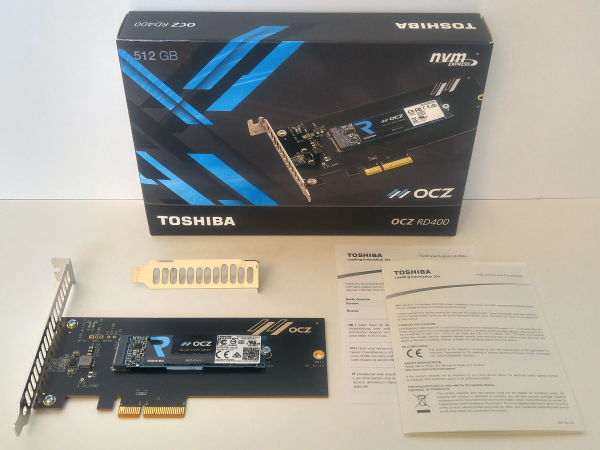The RD400 comes packaged in an attractive gray, black and blue box. While there aren't a lot of details on the front, the back of the box advertises some of the drive's key features including its M.2 2280 form factor, PCIe 3.0 x4 interface, support for NVMe and Toshiba MLC NAND flash memory.


The RD400 is available with or without a PCIe adapter add-in-card. For this review, Toshiba sent us the version with the card, which includes both full and half height brackets. The drive also comes with a small instruction manual as well as a sheet of paper with information on how to reach Toshiba's tech support.

Physical Features:
The RD400 uses the 2280 form factor for M.2 (NGFF) SSDs. The 512GB version of the drive measures 80 x 22 x 3.58 mm and tips the scales at a mere 7.2g. The drive also has an "M key" edge connector which provides PCIe SSDs with up to 4x lanes of bandwidth.

The RD400 uses Toshiba's TC58NCP070GSB NVMe 4 lane controller. At the moment, very little is known about this controller. However, we can assume that like Toshiba's other controllers, it's based on a design from another company like Marvell.


For the 512GB version of the RD400, Toshiba used their own 15nm MLC NAND flash chips. Looking at the pictures above, you can see that there are two 256GB NAND flash packages on the top of the PCB. The drive also has a single Samsung 512GB LPDDR3 DRAM memory chip that is used for caching.

If your computer doesn't have an M.2 slot, it's worth getting the RD400 with the PCIe adapter add-in-card. It is well constructed and it looks nicer than many of the cards I've seen.

